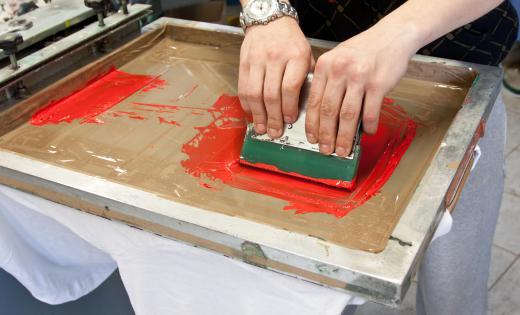Silk screen printing process involves pressing ink through the open pores of an impenetrable material called stencil that is supported on a framed fabric mesh. The stencil blocks the pores of the mesh in the non-image areas, while leaving pores open in the areas to be printed. To start the silk screen printing process, ink is poured over and allowed to spread on the stencil. By using a rubber or leather bladed squeegee, ink is then “pushed” toward the open pores of the stencil in order to print an image. The silk screen printing process is considered an easy method of printing by hand, as it does not require the use of complex printing machines.
For most people, the silk screen printing process is the most versatile among the printing techniques because it can be used to print designs or images on almost any kind of surface, including paper, wood, and fabric. Additionally, the silk screen printing process can also be used for artwork creation, for printing labels on packaging boxes, for commercial printing, and even for electronic circuits; this can be accomplished by using unsophisticated materials, including a stencil, ink, a squeegee, and a fine fabric mesh of synthetic fiber or silk. Unlike other printing techniques such as offset printing and lithography, or offset lithography, the silk screen printing process is fairly easy to do. Ink is simply transferred to a surface through a stencil.

Offset lithography, however, is a rather more complex technique than the silk screen printing process. It is becoming increasingly popular though because it can produce high-quality prints at relatively low cost. Using a water-repellent coating, designs are first made on a metal plate that is later mounted on a cylinder that turns as the printing equipment operates. Separate rollers then spread water and ink onto the plate. This is followed by the settling of the ink over the coating and the transfer of the ink to a roller then to a surface, particularly paper.
Stencils used in the silk screen printing process may be either manually cut or produced photographically, and by this second method they are then termed photostencils. Photostencils are usually made on an adhesive-backed film, but coating of the screen with a light-sensitive emulsion is another alternative. They are developed in water after they have been exposed through a film positive. During development, image areas continue to be soluble, but they are washed away. The inside of the frame serves as the storage of ink, a liquid that is pushed across and through the screen as a result of the work done by the squeegee.
